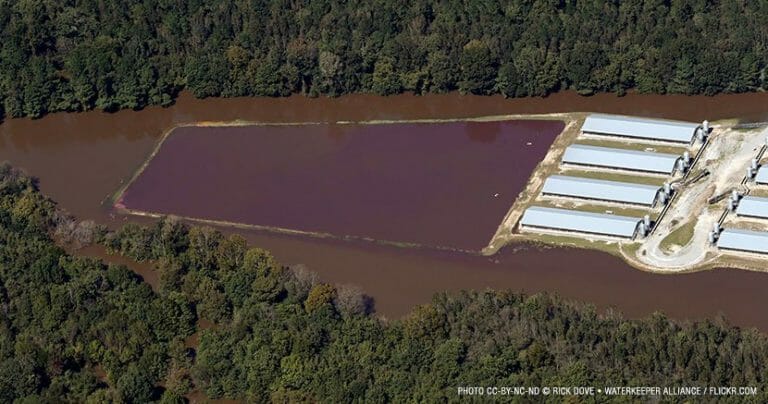Hurricane impacts in coastal areas are generally from high winds and dangerous storm surge. In inland areas, flooding from heavy rain poses a bigger threat, and the devastating flooding that hit the Houston area from Hurricane Harvey’s 51 inches of rain is proof.
It’s been reported that floodwater in some parts of the Houston area contained E. coli counts over 135 times higher than what is considered safe for swimming . E. coli (Escherichia coli) is a type of bacteria that lives in the digestive tracts of warm-blooded organisms and can cause serious health impacts to people who are exposed — often through contaminated food and water. It’s gross, but it’s also a real threat to public health. Some of the E. coli pollution in Houston is flowing from damaged infrastructure like sewage treatment plants that were inundated with floodwaters and that, in some cases, may still be offline.
Some of it, though, is likely running off of factory farms located within the 54 Texas counties declared a disaster area. Factory farms produce a lot of manure and when they’re built in areas prone to flooding they can result in the release of huge amounts of toxic […]
Articles about factory farms at Food and Water Watch: Factory Farms
More about manure and drinking water sources:
Hurricane Florence breaches manure lagoon, coal ash pit in North Carolina
Private water wells in Texas test positive for contamination after Harvey

